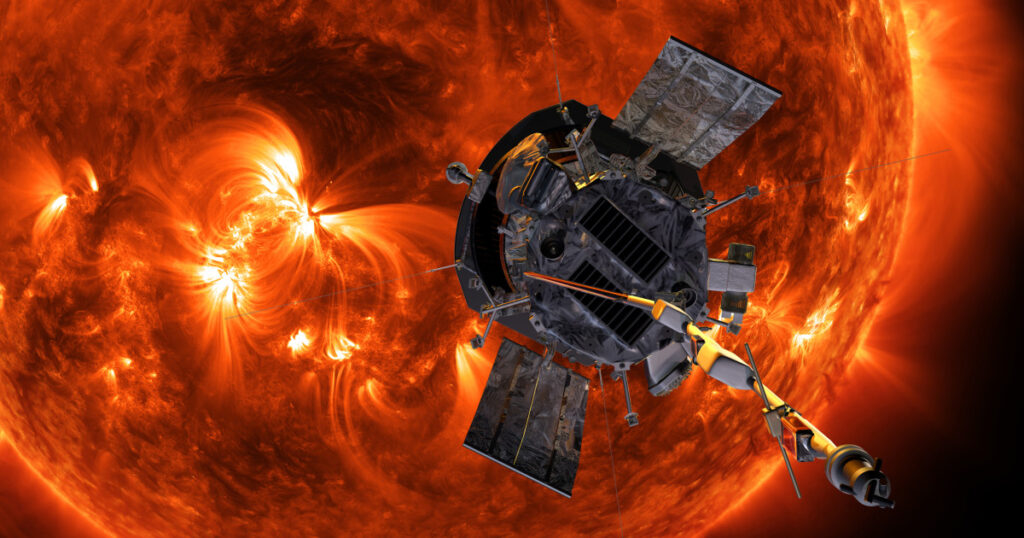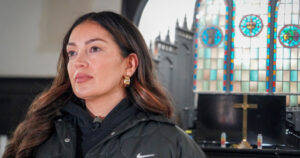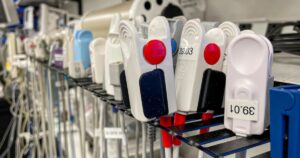
The Summary
- NASA’s Parker Solar Probe is expected to dive extremely close to the solar surface on Dec. 24.
- The spacecraft should get nearer to the sun than any other human-made object in history — within 3.86 million miles.
- The mission was designed to study the sun’s outer atmosphere and help researchers learn about how solar storms erupt into space.
NASA is preparing to “taste” the sun on Christmas Eve.
The agency’s Parker Solar Probe is days away from making its closest-ever approach to the sun on Tuesday, swooping nearer to our star than any other human-made object in history.
The spacecraft, which is about the size of a small car, is set to dive within 3.86 million miles of the solar surface at 6:40 a.m. ET on Tuesday. It will fly by at about 430,000 mph, according to NASA.
“If you can imagine, it’s like going 96% of the way there to the sun’s surface,” said Kelly Korreck, a program scientist in NASA’s heliophysics division.
Mission controllers won’t be able to communicate with the probe during the maneuver, so NASA will have to wait about three days to pick up a signal that the spacecraft survived its rendezvous with the sun.
After that, the first images from the close encounter will likely be beamed back to Earth sometime in January, the agency said.
As the Parker Solar Probe swoops close to the sun, it will likely fly through plumes of solar plasma and could even dive into active regions of the star, Korreck said.
The mission was designed to study the outermost part of the sun’s atmosphere, an ultrahot region known as the corona. Scientists are keen to observe the corona up close because researchers have long puzzled over why the outer layer of the sun’s atmosphere is hundreds of times hotter than the star’s surface.
Observing the corona will also help researchers study how storms that brew on the sun’s surface erupt into space. The probe will, for instance, be able to observe streams of the highest-energy solar particles as they are hurled from the sun, exploding into the cosmos at supersonic speeds.
“This is the birthplace of space weather,” Korreck said. “We’ve observed space weather from afar, but now Parker is living through it. Now we’ll be able to understand better how space weather forms, and when we see storms on the sun in our telescopes, we’ll be able to say what that means for us here on Earth.”
During periods of intense space weather, the sun can unleash giant solar flares and streams of charged particles, known as solar wind, directly at Earth. When these outbursts interact with our planet’s magnetic field, they can damage satellites and knock out power grids — along with supercharging the northern lights.
Korreck said the Parker Solar Probe mission will help researchers better forecast space weather and its potential consequences, similar to the work that meteorologists and atmospheric scientists do for weather on Earth.
The Parker probe launched into space in 2018 and has circled the sun more than 20 times since then. The Christmas Eve flyby will be the first of three final close swings planned for the mission. The spacecraft was named for Eugene Parker, a pioneering astrophysicist at the University of Chicago who first theorized the existence of solar wind. Parker died in 2022 at the age of 94.
Last month, the spacecraft flew by Venus in a maneuver that was designed to help slingshot the probe close to the sun. The upcoming close approach was timed to coincide with the most active period of the sun’s 11-year cycle of activity. This busy phase, which is typically characterized by a flurry of solar storms and high magnetic activity, is known as the solar maximum.
Scientists like Korreck are hoping the Parker Solar Probe will have a front-row seat if any storms are roiling on the surface of the sun on Christmas Eve.













